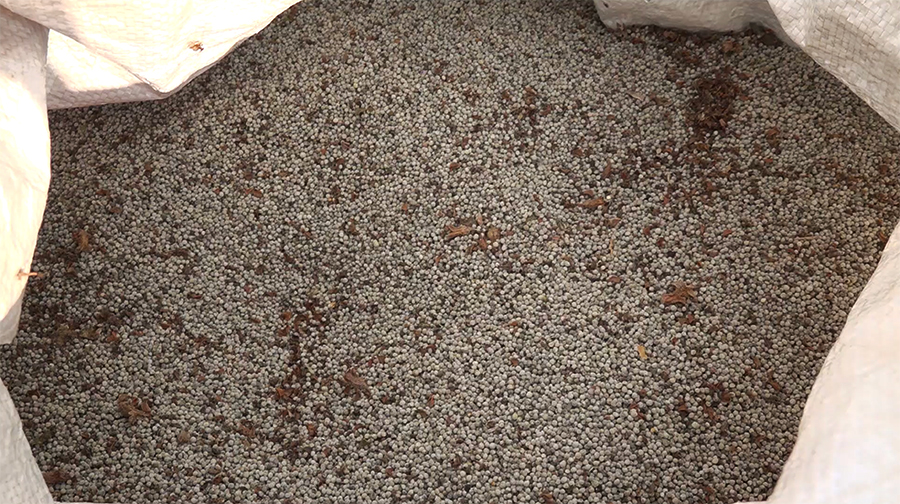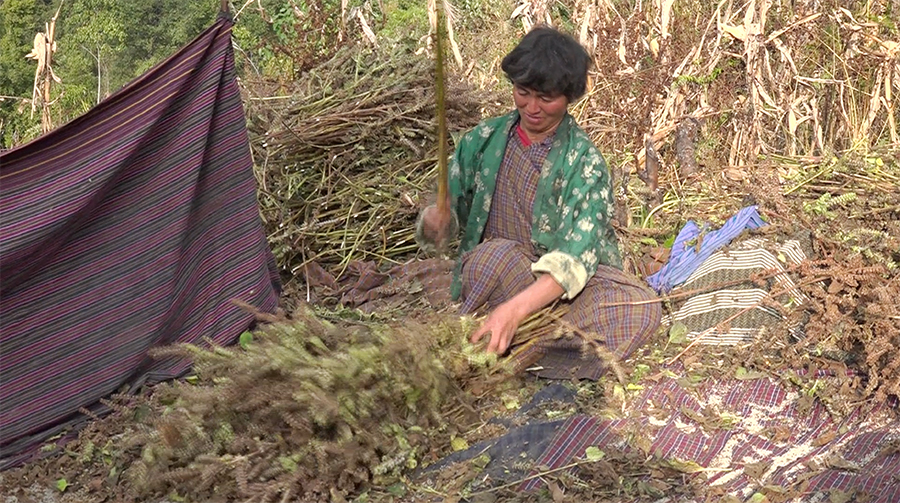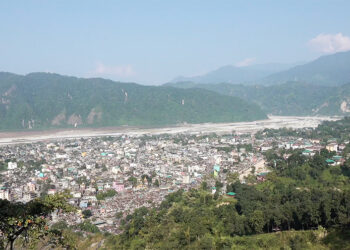
Growing perilla was once a common practice for the farmers of Gomder Gewog in Samdrup Jongkhar. However, over the years, interest in perilla cultivation has waned, and it is on the brink of disappearance. Today, only one villager in Bazor village continues to grow the herb.
Some 20 years ago, farmers in Bazor village used to grow perilla abundantly. Perilla, known for its distinct flavour and aroma was used in preparing dishes, feeding the cattle and as a medicine.
As farming practices shifted towards more commercially viable crops, the cultivation of perilla began to decline. And for many in the village, the herb now is becoming a thing of the past.
For 55-year-old Shechang, however, perilla is still an important part of her life. As the only remaining perilla grower in the village, she harvests perilla seeds the traditional way, using sticks to beat the plants and separate the seeds.
 She says it is a part of her customs and a source of sustenance for her cattle.
She says it is a part of her customs and a source of sustenance for her cattle.
Shechang says, “Before, everyone in the village grew Perilla, but now no one does. I don’t know why they stopped. It’s not easy work to grow, but even though I don’t have my land, I grow it on others’ land. I feed it to my cattle, and sometimes I sell some, though I usually give it away for free.”
Despite its low profitability, Shechang believes preserving the traditional crop is essential.
“I will continue to grow Perilla unless I can no longer work. I don’t know if my children will carry on the tradition. I’ve asked my friends to grow it, but they refuse, saying it’s too much work. I think it’s important to keep growing it because it’s a part of our heritage,” she adds.
However, the younger generation seems less inclined to follow suit.
Pema Wangchuk, a villager says, “I think my parents used to grow Perilla, but I don’t remember. I’m not interested in cultivating it myself. Others might, but not me.”
“I don’t grow Perilla. I work in construction. Cultivating Perilla isn’t as profitable as working outside,” says Nidup Dorji, another villager.
The future of Perilla cultivation in the Bazor village remains uncertain, but the efforts of Shechang highlight the importance of preserving traditional crops and the knowledge passed down through generations.
It serves as a reminder of the need to balance modern farming with preserving cultural and agricultural diversity.
Kinley Wangchuk
Edited by Sangay Chezom








